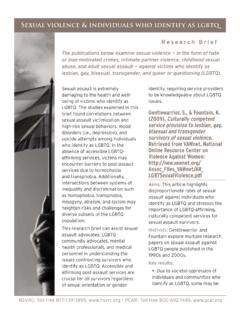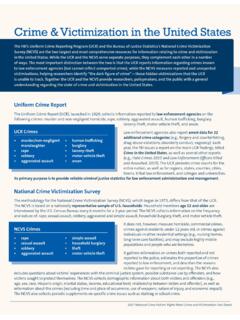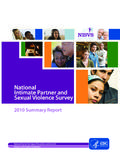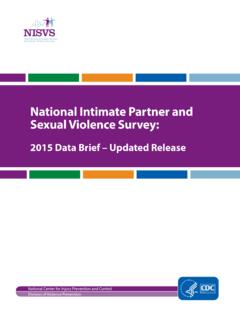Transcription of Domestic and Sexual Violence and Communities of Color
1 Domestic and Sexual Violence and Communities of Color While the impact of Domestic Violence and Sexual assault crosses all social, economic, and racial lines, there are barriers and concerns that are unique to Communities of Color . Survivors of Color often face a lack of culturally appropriate services as well as prevention & supportive resources in diverse languages. Adding to these challenges is a lack of collaboration with the community based social service programs that historically provide services to Communities of Color . These conditions have led to an often marginalized and underserved population of survivors. Barriers for survivors of Color Each community of Color has challenges and circumstances that are unique to their community.
2 However, there are common factors that account for many of the barriers survivors of Color face as they seek help. Cultural and/or religious beliefs that restrain the survivor from leaving the abusive relationship or involving outsiders. Strong loyalty binds to race, culture and family. Distrust of law enforcement, criminal justice system, and social services. Lack of service providers that look like the survivor or share common experiences. Lack of culturally and linguistically appropriate services. Lack of trust based on history of racism and classism in the United States. Fear that their experience will reflect on or confirm the stereotypes placed on their ethnicity. Assumptions of providers based on ethnicity.
3 Attitudes and stereotypes about the prevalence of Domestic Violence and Sexual assault in Communities of Color . Legal status in the of the survivor and/or the batterer. Domestic Violence and Sexual assault statistics for women of Color Women of Color Domestic Violence Statistics: African American females experience intimate partner Violence at a rate 35% higher than that of white females, and about times the rate of women of other races, (Bureau of Justice Statistics, 2001) However, they are less likely than whites women to use social services, battered women s programs, or go to the hospital because of Domestic Violence , (Feminist Majority Foundations Choice Campaign, Women of Color and reproductive Justice: African American Women.)
4 In a study conducted by the Asian Task Force Against Domestic Violence , 47% of Cambodians interviewed said they knew of a woman who experienced Domestic Violence . According to NVAWS, of Native American women are victimized by IPV in a lifetime, defined by rape, physical assault , or stalking . National Crime Against Women Survey, 2006. 48% of Latinas in one study reported that their partner s Violence against them had increased since they immigrated to the US. (Dutton, Mary; Leslye Orloff, and Giselle Aguilar Hass. 2000, Characteristics of help-seeking behaviors, resources, and services needs of battered immigrant Latinas: Legal and Policy implications. Georgetown Journal on Poverty Law and Policy. 7(2) ) Approximately one in three African American women are abused by a husband or partner in the course of a lifetime, (US Department of Justice, Findings from the NVAWS, July 2000.)
5 A survey of immigrant Korean women found that 60% had been battered by their husbands. Tjaden, Patricia and Nancy Thoennes. 2000. Extent, Nature and Consequences of Violence Against Women: Findings from the NVAWS: Women of Color Sexual assault Statistics: In a content analysis of 31 pornographic websites, of the sites depicting the rape or torture of women, nearly half used depictions of Asian women as the rape victim. About 9 in 10 American Indian victims of rape or Sexual assault were estimated to have had assailants who were non-native. (1997 US Department of Justice) Most Sexual assault done against African American women goes unreported. For every African- American woman that reports her rape, at least 15 African-American women do not report theirs.
6 (Bureau of Justice Statistics, US department of Justice) A study of Sexual abuse in the South Asian immigrant community was conducted between 1991 & 1996 found that 60% of the women spoke of being forced to have sex with their husbands against their will. 90% of Indian women in chemical dependency treatment are victims of rape and childhood Sexual abuse. Approximately 40% of Black women report coercive contact of a Sexual nature by age 18. (National Black Women s Health Project) African Americans have the highest rate of violent victimization of any racial group ( per 1000) (US department of Justice) From the Oregon Coalition Against Domestic and Sexual Violence















